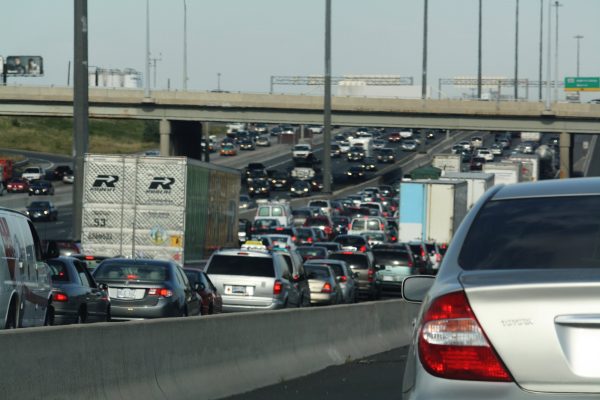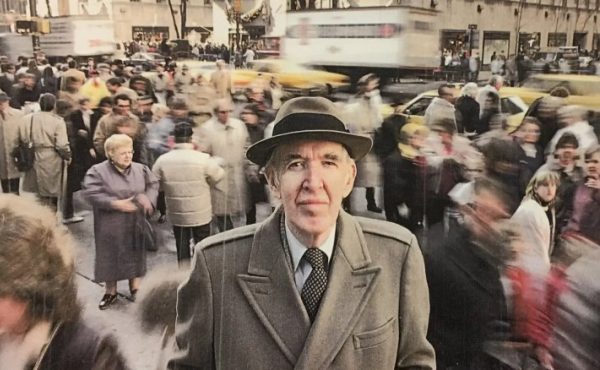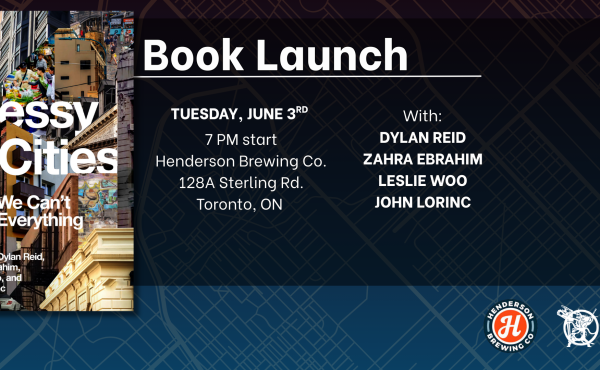According to Doug Ford, his pal the prime minister is giving serious consideration to elevating the premier’s 401-tunnel scheme from the muck deep below north Toronto to the rarified status of nation-building project.
“It’s all right, I talked to him,” Premier Badger said at a tractor pull earlier this week. Traffic congestion “is costing us $58 billion of lost productivity. I think it’s pretty national.”
I just want to deal with the first order of business, which is a bit of a fact-check. That big number above comes from the Toronto Region Board of Trade’s “congestion task force” and it should actually be $44.8 billion — a figure plucked from a report by a consulting group called the Canadian Centre for Economic Analysis.
CanCEA ginned up the cost of congestion thusly: there’s $10.1 billion in economic impact for the GTHA, plus — here’s the magic bit — $34.6 billion in “social value impact,” which, according to these consultants, is a way of putting a dollar value on the many ways that being stuck in traffic saps one’s sense of well-being. Ford’s $58 billion is the report’s estimate for all of Ontario, only a tiny fraction of which will benefit, or not, from the Big Doug.
For the record, TRBOT has claimed for ages that congestion costs the GTA/GTHA about $7-10 billion a year in terms of time lost to delays, but evidently the number wasn’t grabby enough to provoke the desired outrage. (Also worth noting that TRBOT’s current CEO Giles Gherson, a former business journalist, came out early in favour of the tunnel scheme.)
Even the most traffic-addled commuter would likely agree that positioning a $100 billion tunnel under the 401 as a “nation-building” project veers sharply into the realm of the absurd.
I also imagine Mark Carney’s people — but especially the new head of his Major Projects Office, the Calgary-based pipeline executive Dawn Farrell — are capable of doing the political math: besides burying a vast sum of money beneath the city every self-respecting Canadian loves to hate, the pay-off, in terms of economic growth, actual productivity gains and the development of new export markets, is completely non-existent. Concrete producers and civil engineers will make a bundle, but after that the spin-offs are illusory. (The oft-cited delays for trucks transporting goods could be solved tomorrow if the province simply paid the Highway 407 owners to allow 14- or 16-wheelers to use the privatized by-pass for free.)
Nor would Carney, who definitely doesn’t self-identify as a Toronto Liberal, ever live it down, any more than Mel Lastman managed to rid himself of the coast-to-coast-to-coast ridicule for calling in the army to shovel our snowy streets back in January, 1999.
The federal government has said that national projects will be selected based on five core principles: strengthen Canada’s autonomy, security and resilience; provide economic or other benefits to Canada; have a high likelihood of successful execution; advance the interests of Indigenous peoples; and contribute to clean growth and Canada’s climate goals.
“These projects will strengthen Canada’s ability to trade by fostering economic and trade corridors, connecting different parts of the country to get goods to markets, enhance the development of Canada’s natural resources as well as its energy production and infrastructure, and create good paying, unionized jobs,” according to the government.
Even if you squint really hard, the Big Doug doesn’t advance any of these goals, which explains why it didn’t even get onto the unofficial long list leaked to The Globe and Mail. Those 32 projects focus on energy, mining, port infrastructure and a handful of transportation projects, including the high-speed rail line between Quebec City and Toronto.
In virtually every case, the nation-building layer involves boosting exports of critical minerals, energy and other goods, electrification and Arctic security, as well as creating domestic markets for firms that produce goods like steel and aluminum, and have been walloped by tariffs. Yes, a tunnel will use some Canadian-made steel and lots of southern Ontario gravel. Mainly, it fixes in concrete decades of failure when it comes to transit planning in Greater Toronto.
My working hypothesis is that Ford’s call for federal funding, in effect, provides him with a convenient off-ramp for a fantasy project that will only bring misery and disappointment. Carney will say no (`you, Doug, got oodles of green for the Ring of Fire access highway, a pair of mini-nukes and a new train’) and Ford — who, lest we forget, has almost four years to go before another election — gets to tell his congested supporters that he fought the good fight.
But Liberals, as we know, have never been immune to the temptations of pork-barrel politics. It’s always possible that Carney and his cabinet will move the beads on their political abacus and conclude that the tunnel, all reason to the contrary, will buy them something. Or they’ll do that thing that some squishy parents do, which is not quite say no and not quite say yes. In that case, we can all wait for another two years until Ford’s tunnel feasibility study concludes that the project, though technically feasible, will need federal funding.
Carney strikes me, so far, as a no-means-no kind of guy. Let’s hope that his economist’s rationality has more pull than whatever his (inexperienced) political gut is telling him. For if he botches this easy decision, I’d say he’ll have, well, buried a lot of his central banker cred, and thus cast a pall of doubt over the rest of these supposedly historic nation-building investments.






2 comments
Adding more lanes under then 401 for cars, is an incredibly dumb idea. If your spending that much money, then how about electrify the Lakeshore GO line, and increase trains to maybe a 10 minute headway, from Oshawa to Hamilton. Maybe make that 24/7 with a 20 minute headway between midnight and 6am and all day on weekends.
Extending the Sheppard Subway west through Downsview (not just to Downsview) is a far more effective use of taxpayer dollars.
The terminus could be:
A) Keele and Wilson (where the Humber River Regional Hospital site, the Centre for Forensic Sciences, Ontario’s Coroner and major MTO officers are located), or
B) Jane Street (the owners of Leon’s want to redevelop their land which is located between the 400 and 401 and Jane Street) or
C) Islington and 401 (near the Ministry of the Environment and a great site for a replacement Etobicoke North GO Station for Rexdale residents 3 km from Weston and 3 km from the future Highway 27 GO station)
Having a subway that basically runs across North York (from 400 to 404) would likely draw many people who would prefer to avoid driving along the 401. Plus it addresses some significant overcrowding on major TTC routes (Wilson, Sheppard, Jane, Keele).